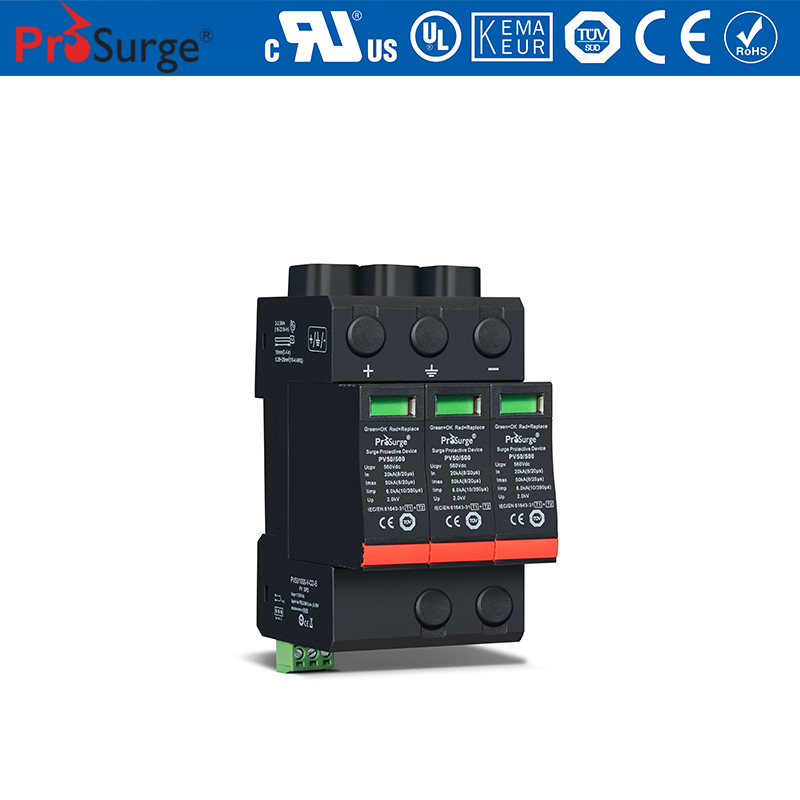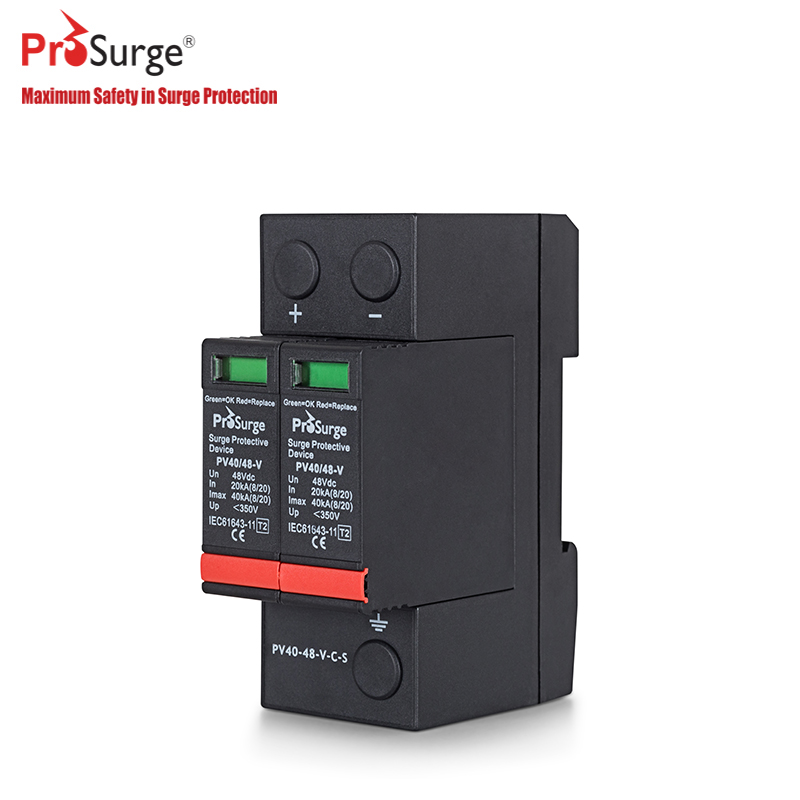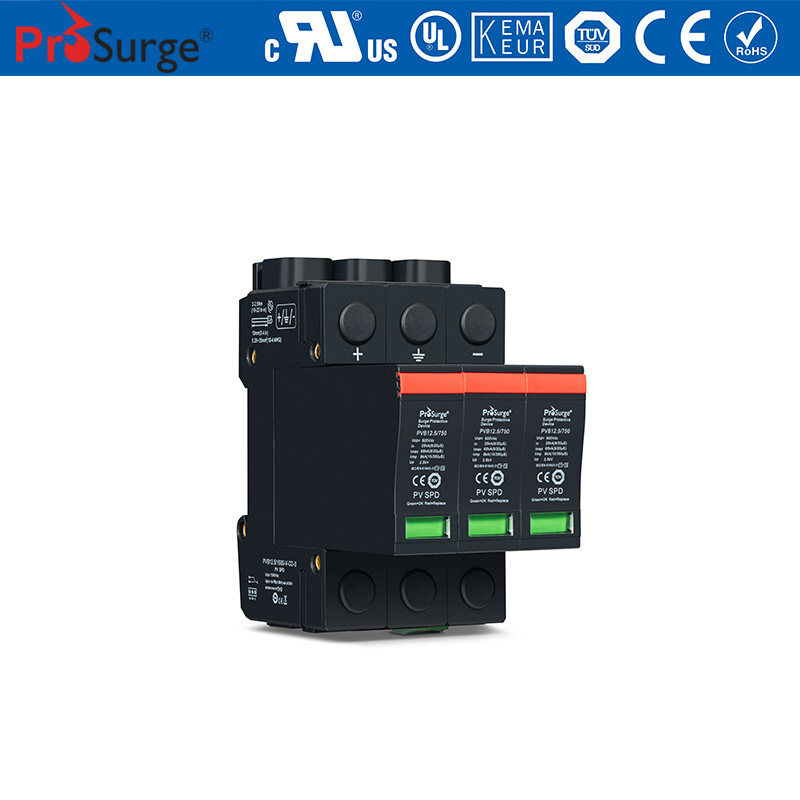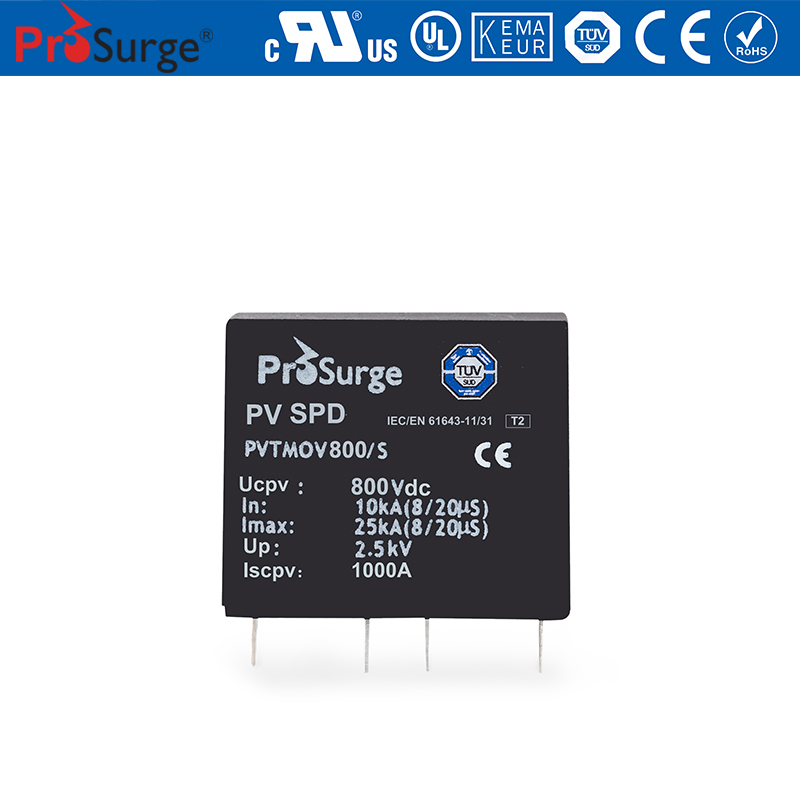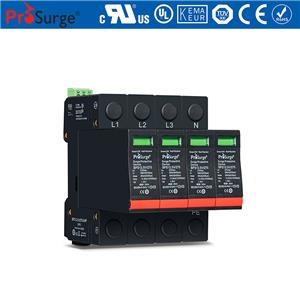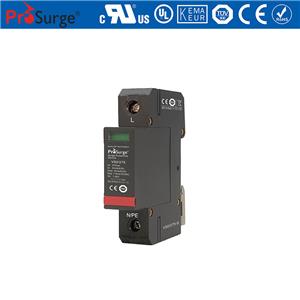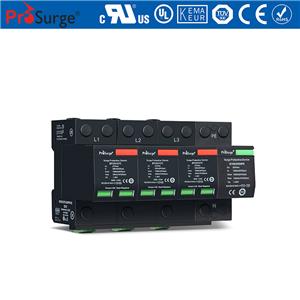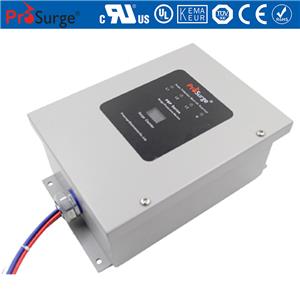IEC61643-31 DC Photovoltaic SPD
-
Hot
Class I&II, T1+T2, TUV PV Solar DC Surge Arresters
PROSURGE PV50 series (48Vdc~1500Vdc) are class I & class II (or T1+T2 ) PV DC SPD designed for DC application such as PV/ solar system dc-side surge protection. Built in high energy MOV, Iimp 7.5 kA 10/350μs, with thermal protection, quick thermal response and secure disconnection.
Email Details -
Class C Din Rail PV Surge Protector
Type 2 surge arrester designed for low voltage DC system against surges at the boundaries from lightning protection zone 0B-2and higher.
Email Details
In accordance with EN50539, IEC61643-11 and UL1449-4th
DC SPD for common mode protection
Pluggable module design, easy replacement
High discharge current 40kA 8/20
Reliable supervision due to disconnection device;
Fault indication by red indication flag in window;
With remote alarm terminal optional; -
Class B + C Din Rail Solar PV SPD
TUV certified T1+ T2 PV DC SPD per IEC/EN 61643-31 standard.
18mm narrow model design, prewired three poles of Y circuit for common mode & differential mode protection
Application in Photovoltaic (PV) systems and other DC power system like charging system for electric vehicles etc.
Unique thermal disconnector design
Lightning current capacity up to 12.5kA 10/350μs
Surge current capability up to 80kA 8/20μs
Low voltage protection level
Degradation failure indication and optional remote signal contact.
Pluggable module for easy replacement without the need to remove system wiring.
Wide operating temperature -40ºC ~85ºC
35mm DIN-rail mounting
Comply with EN 50539-11,UL1449 5th, IEEE C62.41,CSA C22.2 standardsPhotovoltaic surge protector Surge Protection device for solar PV Plants surge arrester for PV projectEmail Details -
Hot
PCB Mounting Surge Protection Modules
Nowadays, Photovoltaic systems (PV System) range from small, rooftop-mounted or building-integrated systems with capacities from a few to several tens of kilowatts, to large utility-scale power stations of hundreds of megawatts, and in the meanwhile the potential impact of lightning events increases with PV system size. Where lighting occurrences are frequent, unprotected PV systems can suffer repeated and significant damage to key components. This results in substantial repair and replacement costs, system downtime and the loss of revenue.
Email Details

